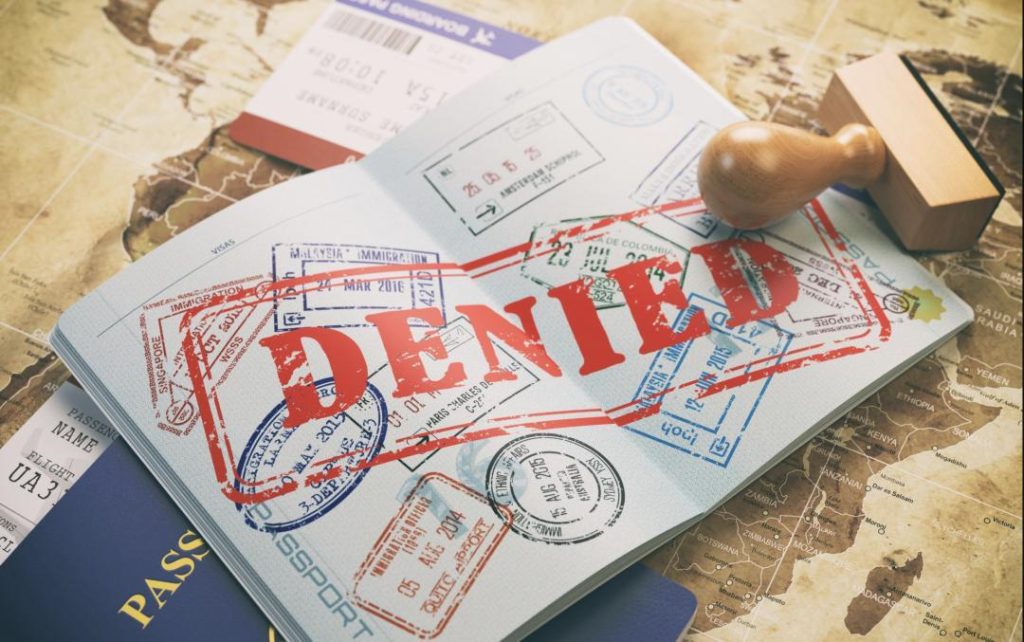
Indian Tourists Lost ₹662 Crore in 2024 Due to Visa Rejections
The Indian outbound travel industry has been witnessing a significant surge in recent years, with a steady growth in the number of tourists venturing out to explore the world. However, the journey of Indian tourists has not been entirely smooth, with a significant number of them facing visa rejections, resulting in substantial losses. According to a recent report, Indian tourists lost a staggering ₹662 crore (approximately USD 85 million) in the year 2024 due to visa denials.
The report, which highlights the challenges faced by Indian tourists, reveals that the UAE, UK, Australia, New Zealand, and Schengen nations rejected a substantial number of visa applications, resulting in the massive financial loss. The reasons behind these rejections are varied, but stringent regulations, increased financial proof requirements, and higher visa costs have been identified as the primary contributing factors.
Despite the setbacks, the Indian outbound travel industry has shown resilience, with a growth of 8.5% in the first 10 months of 2024. This growth is a testament to the unwavering enthusiasm of Indian tourists, who are willing to navigate the complexities of the visa application process to explore new destinations.
Reasons Behind Visa Rejections
So, what are the primary reasons behind visa rejections for Indian tourists? Let’s take a closer look:
- Stringent Regulations: Many countries have introduced stricter regulations to curb the influx of tourists, particularly from high-volume source markets like India. These regulations often require additional documentation, which can be time-consuming and frustrating for tourists.
- Increased Financial Proof Requirements: In recent years, many countries have increased the financial proof requirements for tourists, making it mandatory for applicants to provide detailed financial records, including bank statements, income tax returns, and proof of employment. This can be challenging for many Indian tourists, who may not have the necessary documentation.
- Higher Visa Costs: Visa costs have increased significantly in recent years, making it a significant financial burden for many Indian tourists. The additional costs, combined with the risk of rejection, can deter many tourists from applying for visas.
- Application Processing Times: Delays in application processing times can also lead to visa rejections. Many countries have long processing times, which can leave tourists wondering about the status of their applications.
- Lack of Awareness: In some cases, visa rejections can be attributed to a lack of awareness about the application process, eligibility criteria, and requirements. This lack of awareness can lead to mistakes in the application process, resulting in rejection.
Impact on the Indian Outbound Travel Industry
The impact of visa rejections on the Indian outbound travel industry is significant. The loss of ₹662 crore in 2024 is a staggering figure, which can have far-reaching consequences for the industry. Here are some potential impacts:
- Reduced Tourist Numbers: Visa rejections can lead to a reduction in tourist numbers, which can have a direct impact on the revenue of travel companies, hotels, and other stakeholders in the industry.
- Loss of Business: Travel companies may struggle to recover from the loss of business, which can lead to a decline in their financial performance and potentially even bankruptcy.
- Increased Competition: Visa rejections can create an opportunity for competitors to fill the gap, potentially leading to increased competition in the market.
- Impact on Economic Growth: The loss of revenue in the tourism sector can have a ripple effect on the overall economy, potentially impacting economic growth and employment.
Way Forward
So, what can be done to mitigate the impact of visa rejections on the Indian outbound travel industry? Here are some potential solutions:
- Simplification of Application Process: Countries can simplify the application process by reducing the number of documents required, streamlining the online application process, and providing clear guidelines on eligibility criteria.
- Reduced Visa Costs: Visa costs can be reduced to make it more affordable for Indian tourists, which can increase the number of applications and reduce the risk of rejection.
- Increased Transparency: Countries can provide clear and transparent information on application processing times, eligibility criteria, and requirements, which can reduce the risk of mistakes and rejections.
- Streamlined Application Processing: Countries can invest in technology to streamline the application processing times, reducing the risk of delays and rejections.
Conclusion
The loss of ₹662 crore in 2024 due to visa rejections is a significant setback for the Indian outbound travel industry. However, the industry has shown resilience, with a growth of 8.5% in the first 10 months of 2024. To mitigate the impact of visa rejections, countries can simplify the application process, reduce visa costs, increase transparency, and streamline application processing times. By addressing these challenges, the Indian outbound travel industry can continue to thrive and grow, despite the setbacks.
News Source
https://trak.in/stories/indians-lost-rs-662-crore-in-12-months-due-to-visa-rejection-uae-at-1/






